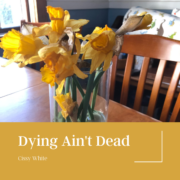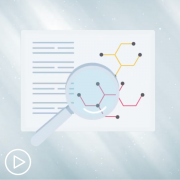Current Waldenström Macroglobulinemia Treatment Approaches
Current Waldenström Macroglobulinemia Treatment Approaches from Patient Empowerment Network on Vimeo.
Which Waldenström macroglobulinemia (WM) treatment is right for you? Dr. Jorge Castillo discusses available WM treatment approaches and their side effects.
Dr. Jorge Castillo is Clinical Director at the Bing Center for Waldenström Macroglobulinemia Dana-Farber Cancer Institute and Assistant Professor of Medicine at Harvard Medical School. Learn more about Dr. Castillo, here.
See More From The Pro-Active Waldenström Macroglobulinemia Patient Toolkit
Related Programs:

Factors That Affect Waldenström Macroglobulinemia Treatment Decisions |

|

Why Patients Should Speak Up About WM Symptoms and Side Effects |
Transcript:
Katherine:
Can you walk us through the currently available treatment approaches for WM?
Dr. Castillo:
Oh, there’s plenty. And that is actually a good message. So, there are many treatment options, and the treatment options are almost equally effective. So, I think we can separate the treatment options in big groups. I think that the big group, the first group that we use, treatments that are very effective, is chemotherapy-based. And we have a number of chemotherapy options that we use routinely for patients with Waldenstrom’s. We typically combine chemotherapy with an antibody called rituximab. And that rituximab is used universally for a lot of different blood cancers out there.
And so, when we combine the chemotherapy with the rituximab, I would say probably 90 to 95 percent of patients that get treated do feel better. Not only their numbers improve, but also the symptoms improve, the treatments. These treatments are typically given intravenously, and they are typically given for about six months of treatments. It’s very easy to tolerate.
I mean, it’s not the classic chemotherapy that we think about with other cancers, right? Losing your hair and vomiting and being very sick. That is not what happens with these chemos. They are very gentle chemos. But the fact that they are gentle doesn’t mean that they do not work. I mean, they are very effective against the disease, but they are more gentle in terms of the side effects. Some other side effects that I think are important with chemo specifically is the small risk of developing another bone marrow disease, and that’s because of how chemo works. It also damages a little bit the good cells, and that can cause other problems, and the risk of infections.
I think nowadays, in the context of the pandemic, I think the risk of infections is something that we need to really talk about a lot with our patients. But these typically are six-month treatments, intravenous treatments, and then done with treatments and very effective regimens. Then, we have the non-chemo treatments, which is you have a lot of those, development of those therapies over the years.
We do have a group of medications called proteasome inhibitors, or PIs. And we borrow those from the myeloma group.
Myeloma is another blood cancer that shares some similarities with Waldenstrom’s, so we use some of those treatments into our treatments. And these are non-chemotherapy agents. We also combine them with rituximab to make them more powerful.
And some of them are intravenous. Some of them are injected under the skin. Some of them are pills. And again, six months of treatments, very nicely tolerated, very effective. I’m talking about 90, 95 percent efficacy rate. And the side effects with this are more like nerve ending damage or more like lung, heart problems, not really secondary malignancies, but infections is also an issue here too.
And then, we have the most – the newer treatments that are the pill form treatment. We call them BTK inhibitors, B as in Boy, T as in Tom, K, BTK inhibitors.
We use that for many other diseases as well, but we use them for Waldenstrom’s too. And we use them alone in most scenarios. Sometimes, we can combine them with rituximab, but the large experience is without rituximab. So, it’s just the pill. Nothing else. No injections or infusions. No risk of secondary bone marrow disease. No risk of neuropathy. But they are pills that you have to take every day, indefinitely.
So, in contrast with the other six-month treatments, duration treatments, these are treatments that tend to last for several years. And we do have some taking these pills sometimes for six, seven, eight years, and they continue on them because they do well, and their response is as good as chemotherapy. But it’s just with a pill that you need to take every day.
Now, these pills have a different set of side effects, and that includes sometimes some irregular heartbeats, some bleeding and bruising. We have a new pill just that we published on recently, a medication called venetoclax, with a V. Again, it’s a different mechanism of action. It’s a BCL-2 inhibitor. It doesn’t have any risk of arrhythmia or bleeding, but it can cause some issues with infections.
But maybe you can take two years of this treatment and not take it indefinitely. So, all these are treatments that we keep advancing, and we will continue running studies with new medications that hopefully have similar or higher efficacy with a better side effect profile.
Now, just to finalize, the last option that should always be in the mind of a patient is clinical trials, investigational agents that are not sometimes – some of them are approved already by the FDA.
Sometimes they’re not. But they are agents that either in the laboratory or in prior experience suggest that they might have efficacy on these patients.
And that’s another treatment option that could be considered in some scenarios.










